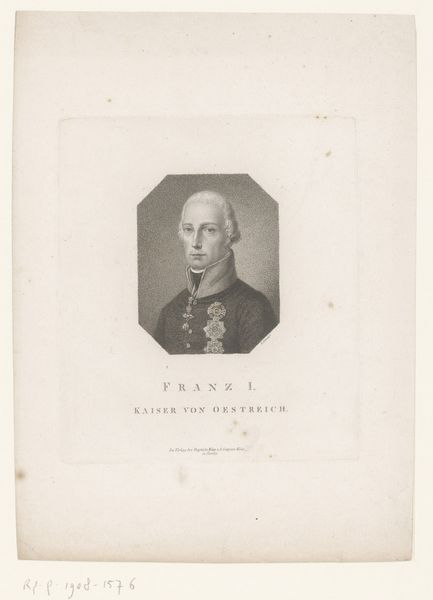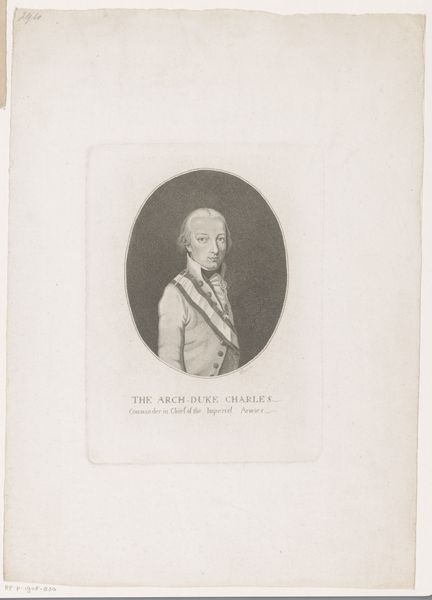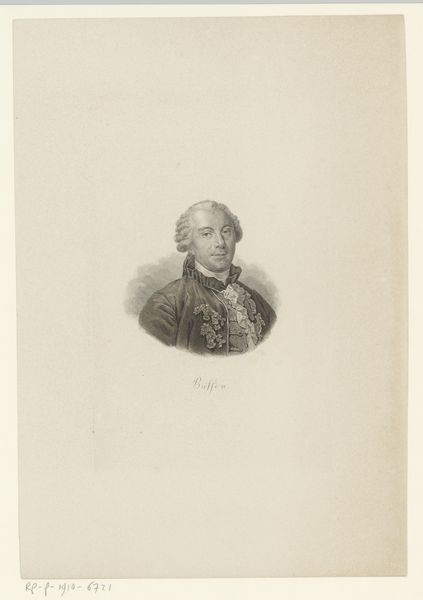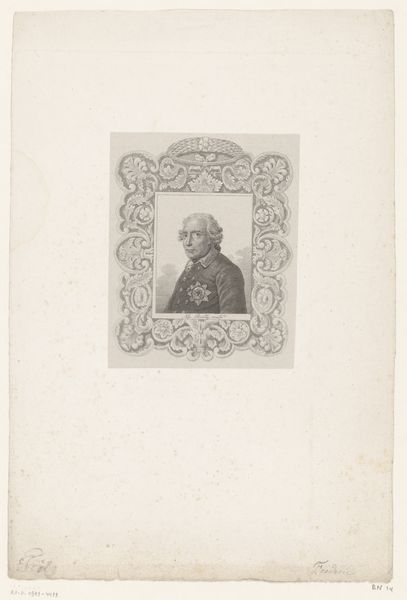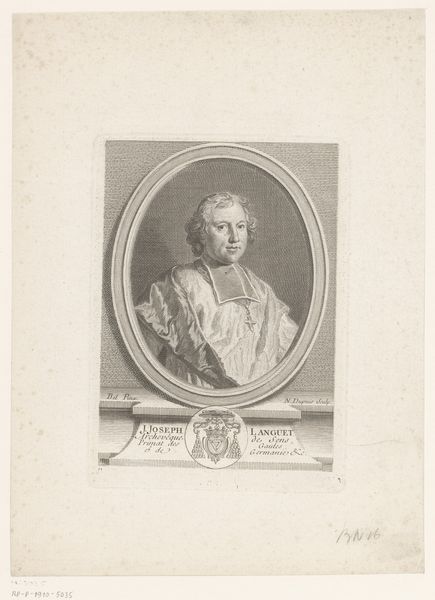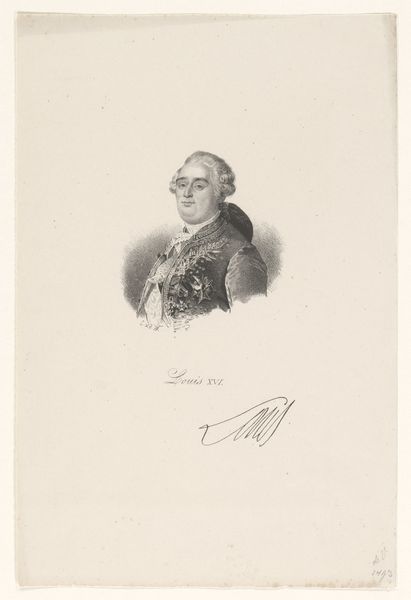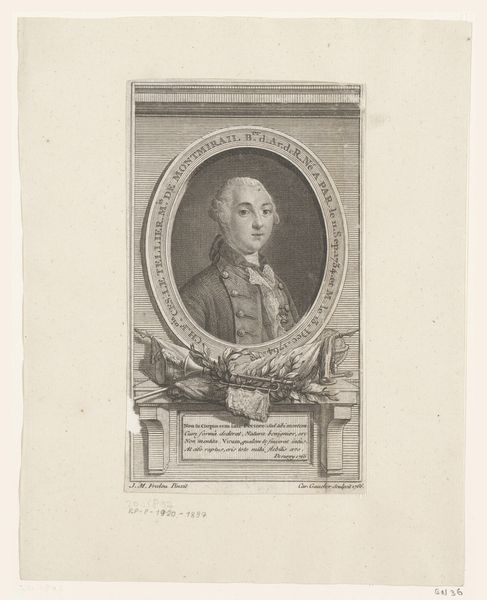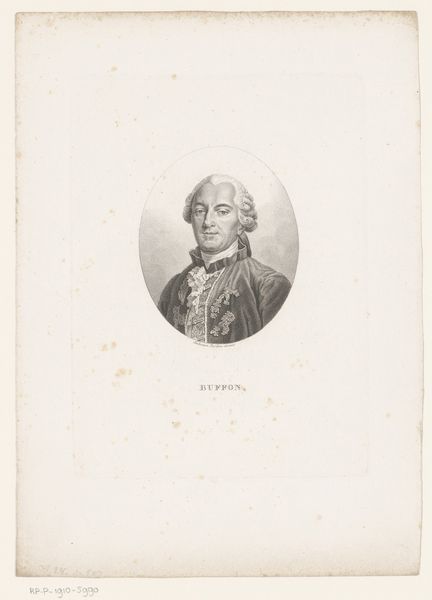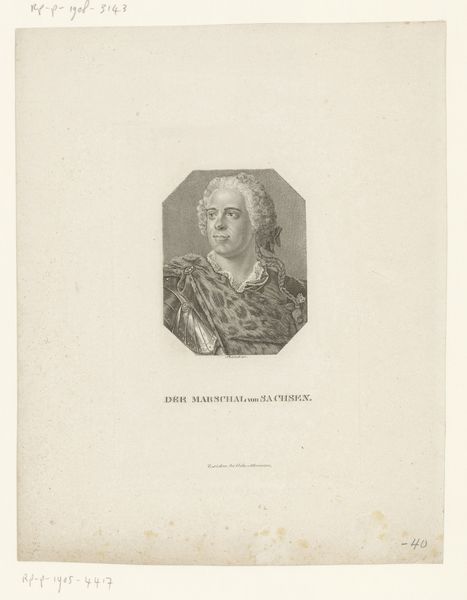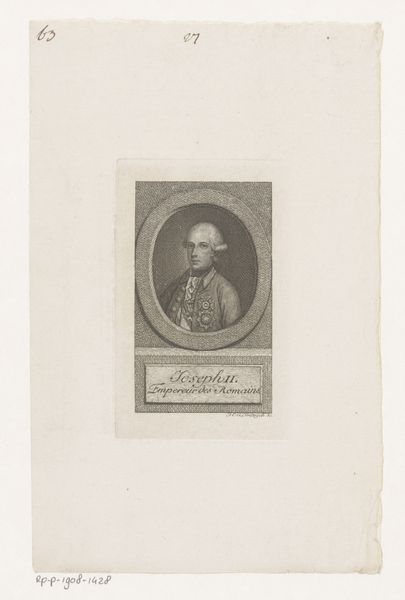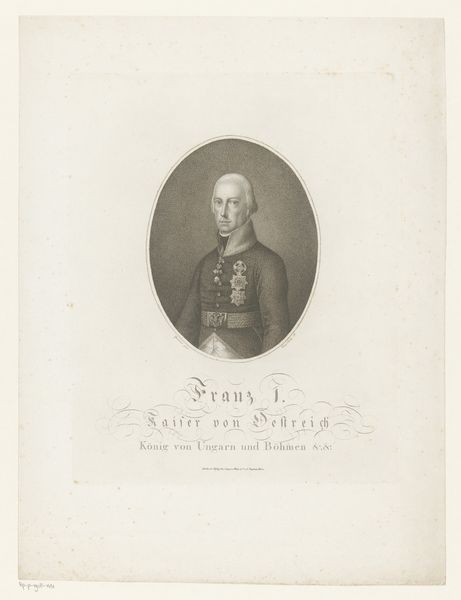
engraving
#
portrait
#
neoclacissism
#
old engraving style
#
history-painting
#
academic-art
#
engraving
Dimensions: height 104 mm, width 60 mm
Copyright: Rijks Museum: Open Domain
Curator: Here we have Manuel Salvador Carmona's "Portrait of Charles IV, King of Spain", dating roughly from 1744 to 1820, realized in the meticulous style of an engraving. Editor: It's incredibly detailed, the ornamentation is very elaborate. I immediately see power and perhaps a hint of formality, fitting for a king's likeness. Curator: Indeed. Note how Carmona leverages the medium. The rigorous line work constructs form, while subtle tonal variations, created through hatching, suggest depth. It epitomizes Neoclassical order. Editor: It is interesting to observe all of the embellishments here: Charles’ clothing with rich symbols—these medals. It could represent sovereignty, but, specifically, can we understand more? Curator: Undoubtedly. Consider that each decoration represents a complex history, royal lineages, alliances, and religious affiliations, meticulously codified over decades. He becomes a walking semiotician. Editor: Yes, I am wondering if they give insight into political status, legacy building, something to show posterity and create his place within history. Curator: Precisely, everything in academic portraits of this era was strategically used in the visual construction of identity and legacy, the gaze, the pose, even the frame containing the subject, are meant to communicate virtue and legitimacy. Editor: Thinking of all these layers embedded within what seems a rigid presentation... I am quite grateful for understanding this symbol system better with you. Curator: And for me it has been illuminating to consider the symbolic weight resting on the carefully constructed foundations of visual form.
Comments
No comments
Be the first to comment and join the conversation on the ultimate creative platform.

